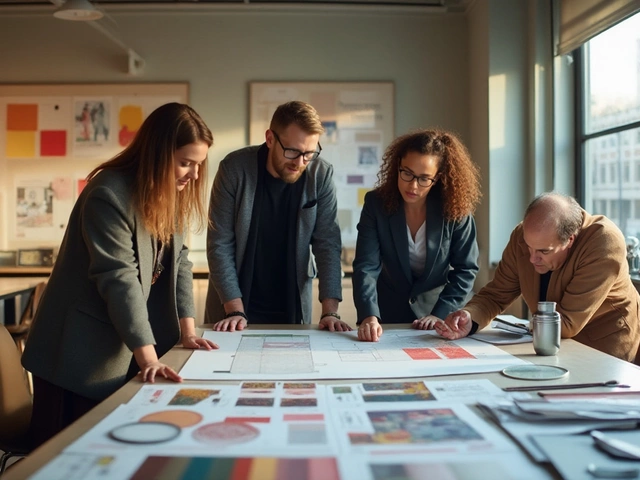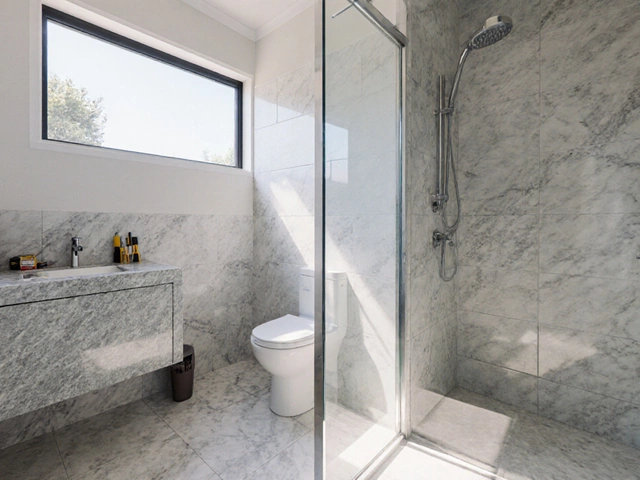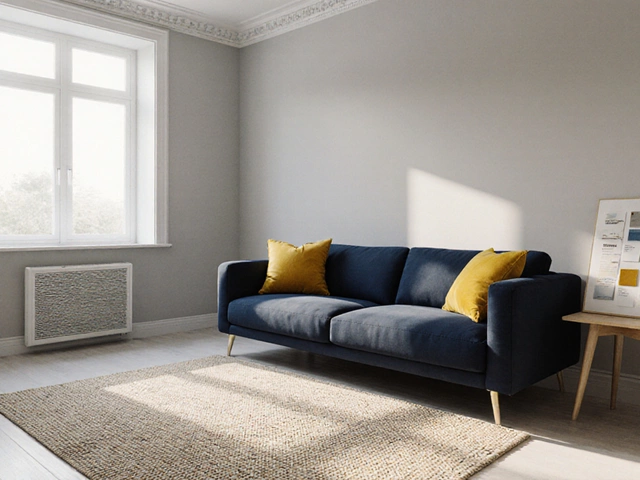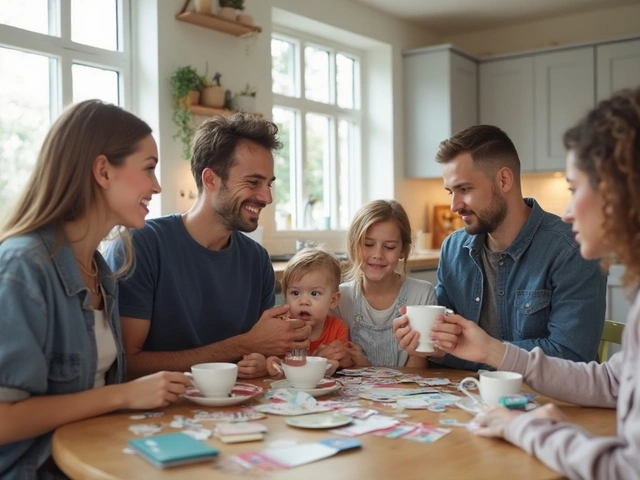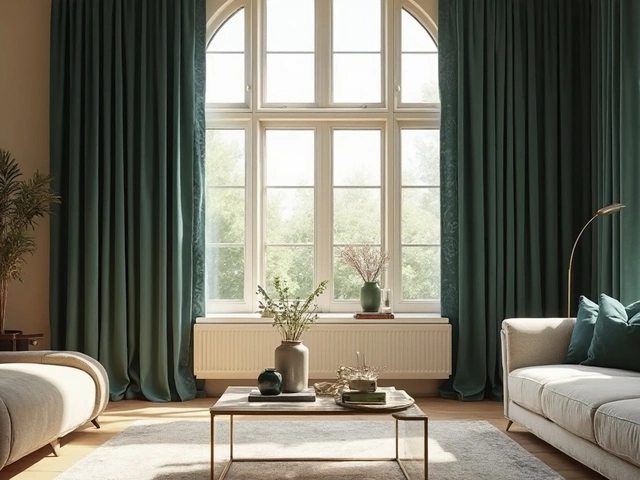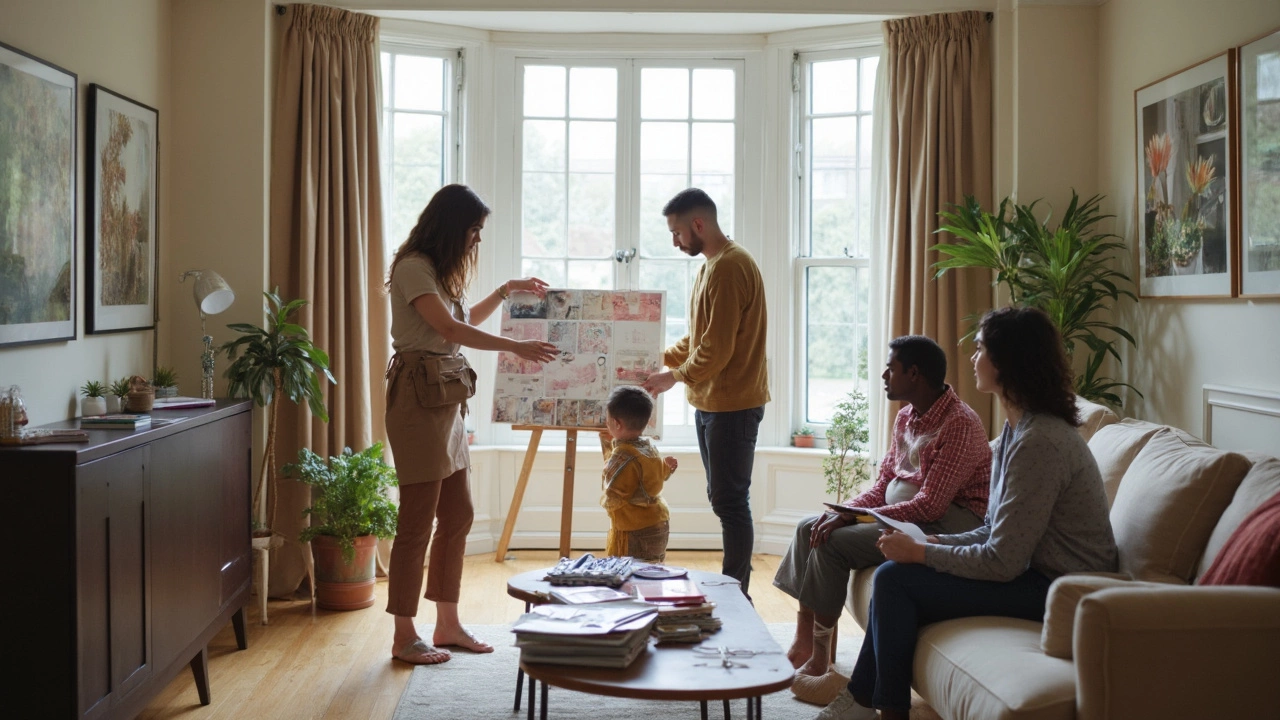
So, is interior design actually in trouble, or are people just expecting something different now? This question isn't just for designers—it's for anyone looking around their living room wondering if their place feels a bit bland compared to those picture-perfect homes on Instagram.
Let's be real: interior design isn't dead, but it's facing a shakeup. People have way more access to design ideas than ever, mostly thanks to social media and endless 'how-to' videos online. Everyone thinks they can DIY, but that doesn't mean everyone's happy with the results. You’ve probably seen those copycat rooms: same beige sofas, same wall art, same three plants in identical pots. That's not creativity—that’s just playing it safe.
If you’re frustrated by spaces that feel soulless or overdone, you're not alone. But the trick isn't giving up on design—it’s figuring out what works best for your style, your space, and the way you actually live. Real design isn't about chasing trends; it’s about solving your everyday problems and making your home feel like you. Ready for some practical tips? That’s what you’ll get here.
- What People Really Mean When They Say ‘Declining’
- DIY Culture and the Rise of ‘Copy-Paste’ Design
- Social Media: Inspiration or Exhaustion?
- Designing for Function vs. Aesthetics—Are We Losing Balance?
- What Interior Designers Are Doing Differently Now
- Easy Tips to Level Up Your Own Space
What People Really Mean When They Say ‘Declining’
When someone says interior design is “declining,” it’s not about designers running out of ideas or the end of cool spaces. What most folks are bringing up is that a lot of homes are starting to look the same; think cookie-cutter. If you scroll through places like Instagram, Pinterest, or even listing sites, you’ll notice the same types of colors, sofas, lights, and wall art everywhere. It’s like everyone’s reading from the same playbook. Some people call this the ‘beige crisis’—rooms get trendy, but the personality gets left out.
Another reason people say things are on the decline is budget. With more free inspiration and cheap decor options, fewer people are hiring professionals. The home improvement industry in the US grew by $100 billion from 2019 to 2024, but a lot of that went toward DIY projects, not working with designers. And while DIY isn’t bad, it’s led to more mistakes, more quick fixes, and fewer long-lasting results.
Technology is also shaking up the mix. Online tools and virtual design apps mean regular people can experiment with layouts and colors without ever talking to an expert. That sounds great on the surface, but it also means more generic results—everyone’s picking from the same templates.
The main thing? "Declining" isn’t really about quality falling off a cliff. It’s about a shift: people want fast fixes over spaces with a personal touch. Some just see too much sameness. The real challenge for interior design is keeping things fresh and personal in a world full of one-size-fits-all trends.
DIY Culture and the Rise of ‘Copy-Paste’ Design
Scroll through Instagram or Pinterest, and you’ll see a flood of identical kitchens, bedrooms, and living rooms—all with the same white walls, minimalist shelves, and that one trending vase. What’s happening here? DIY culture has exploded in the last decade, especially among millennials and Gen Z. TikTok alone had over 250 million searches for #DIYHome by March 2025. People crave creative control and—let’s be honest—want to save money by skipping professional help.
This must sound familiar: you find a look online, buy the recommended pieces, and copy it at home. Done. But does your space actually feel like yours now? Or did you just land in the comfort zone of everyone else’s playbook? The problem isn’t with trying things yourself. It’s when personalization gets replaced with blind imitation.
| Year | % DIY Home Projects (US Households) | % Hiring Interior Designers |
|---|---|---|
| 2015 | 37% | 14% |
| 2020 | 49% | 9% |
| 2024 | 57% | 6% |
If you look at the numbers, more than half of U.S. households tried a DIY project in 2024, while only 6% worked with a pro. Back in 2015, the split was much closer. No wonder stores like IKEA and Target keep cranking out furniture lines targeted at weekend warriors.
But there’s a downside. As designer Shavonda Gardner put it:
"People want quick wins, but real design happens when you stop copying and start making choices with your own story in mind."When everyone’s home looks like a magazine cover, it’s hard for anyone’s personality to show through. It’s why many homes look okay in pictures but don’t actually feel lived-in or inviting.
Here’s some quick advice to avoid the trap:
- Pick one trend you genuinely love—skip the rest. Let your taste guide you, not someone else’s checklist.
- Mix in something secondhand or inherited. It instantly adds character.
- Personal photos, art from local artists, or DIY projects with meaning will give your space actual soul.
- Remember, a interior design project shouldn’t feel rushed. Let your space evolve with you.
The best spaces aren’t photo copies—they tell your story. You don’t need to scrap DIY, but do yourself a favor: make it yours, not a rerun.
Social Media: Inspiration or Exhaustion?
Ever spent hours scrolling on Pinterest or Instagram just to end up feeling totally burnt out instead of inspired? Social media used to be packed with fresh interior design ideas, but nowadays, you see the same color palettes and furniture styles repeated everywhere. According to a 2024 Statista report, about 68% of homeowners use social platforms as their main source for home décor ideas. Yet, most admit that what they see is starting to blend together.
Sure, these platforms are a goldmine for trends, tips, and even quick DIY hacks. But there’s a downside when everything looks too similar. Many people say they feel “design fatigue” after seeing thousands of beige living rooms, identical gallery walls, and that one trending curved sofa again and again. A real 2023 Reddit poll in the r/InteriorDesign community showed that over half the users felt their design decisions were influenced more by what’s popular online than by their actual lifestyle needs.
Here’s what’s really happening on social media right now:
- Endless repetition: Viral designs are everywhere. It’s hard to find something truly unique when everyone’s copying the same looks.
- Pressure for perfection: Those spotless influencer homes are often staged just for photos. Real life is always messier.
- Information overload: Too much choice can lead to decision fatigue. People get stuck in research mode and never move forward.
- Instant gratification: Fast trends mean quick decorating decisions, but that furniture you bought from a viral ad might not last.
Curious how much influence social media really has on design choices? Check out these recent stats:
| Platform | Used for Design Inspiration (%) | Top Design Trend in 2024 |
|---|---|---|
| 54 | Minimalism | |
| 68 | Earth Tones | |
| TikTok | 31 | DIY Upcycling |
If social media’s leaving you overwhelmed, try these simple tricks to filter out noise and boost real creativity:
- Pick two or three influencers with different styles—don’t just follow the crowd.
- Save only what truly sparks ideas, not just what's trending.
- Set a time limit when browsing for inspiration to keep from burnout.
- Trust your own taste—your space should feel like you live there, not like a showroom.
Don’t let the endless feed wear you down. Use social media as a tool, not a rulebook.
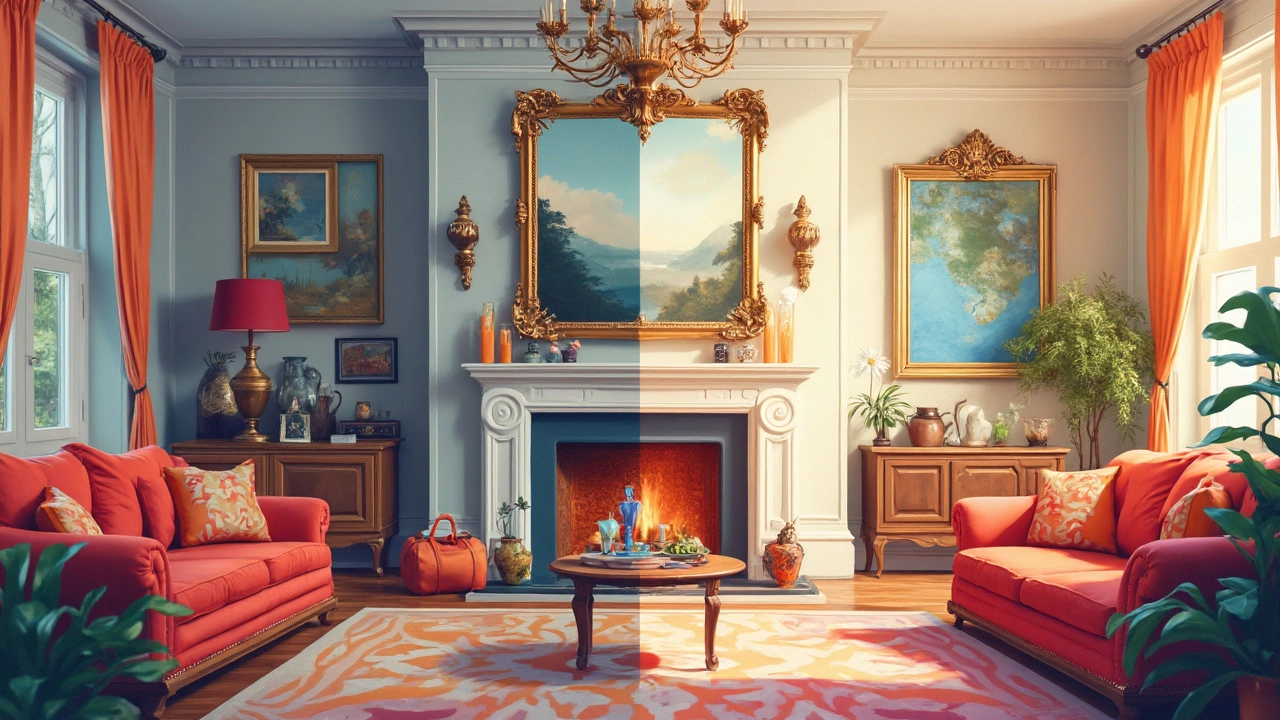
Designing for Function vs. Aesthetics—Are We Losing Balance?
One big issue people are running into is the fight between what looks good and what actually works day to day. You ever walk into a room that's straight out of a magazine, but there’s nowhere comfy to sit or you can’t find a light switch? That’s the problem right there—sometimes style gets pushed so hard that comfort and usefulness take a back seat.
This isn’t just opinion. According to a 2024 survey by Houzz, 64% of homeowners regret at least one design decision, and nearly half say their regret comes from copying trends that turned out to be impractical. For example, all-white kitchens look clean for about five minutes… then you spill coffee. Open shelves look great if you love dusting.
| Feature | Aesthetically Popular | Functionality Score (out of 10) |
|---|---|---|
| All-white kitchens | Yes | 4 |
| Open shelving | Yes | 5 |
| Large sectional sofas | No | 9 |
| Dedicated workspaces | No | 8 |
That table shows a real disconnect. Stuff that gets all the likes isn’t always the stuff working best for real life. But it doesn’t have to be a tradeoff. Interior designers (the good ones, anyway) are focusing more and more on making sure a space fits the way people live—not just how it photographs for interior design blogs.
- If you have kids or pets, skip the fancy white rug and go for something that’s actually cleanable.
- If you work from home, don’t pick a coffee table as your main desk—invest in a decent chair and a quiet corner instead.
- Storage is not the enemy—a clutter-free space looks good and works better day to day.
It’s easy to get sucked in by pretty pictures, but the best spaces are the ones you can actually use and enjoy. Design can look amazing and still be super practical. In fact, the best designers nail both at once.
What Interior Designers Are Doing Differently Now
If you think interior designers are stuck in the past, you’ll probably be surprised. The whole game’s shifted. Instead of just picking out expensive furniture or picking a paint swatch, today’s designers act more like creative problem-solvers. They’re finding ways to make awkward spaces useful, squeezing style into small apartments, and working with clients online through virtual consults and 3D design tools. The old "come and measure and charge you by the hour" routine isn’t the norm anymore.
One big change? Designers are focusing less on cookie-cutter looks and more on personal stories. They want your space to show your hobbies, quirks, and what makes your family tick. According to a 2024 Houzz survey, 68% of interior designers say clients now want rooms that “feel like home” rather than those that look pulled from a magazine. That means more custom touches and way less one-size-fits-all stuff.
Tech is also a game-changer. Today’s design apps let clients walk through 3D models of their homes before anyone touches a single wall or spends a dime. Designers use smart tools to source furniture and track deliveries, shaving weeks off a project. And yes, you can even meet with your designer by video call if you’re short on time.
“The design world isn’t shrinking. It’s morphing. People want experts who understand both their budget and their wildest ideas,” says Emily Henderson, a well-known designer and TV personality.
There’s also a bigger focus on upcycling and sustainability. Flashy new pieces aren’t always the default—designers now regularly hunt for vintage finds or reuse what clients already own. That’s not just trendy, it’s smart and saves money. Check these options that designers increasingly recommend:
- Mixing affordable chain store basics with unique thrift shop finds
- Choosing locally-made or eco-friendly materials
- Creating zones in open spaces to help with work-from-home needs
If you think hiring a designer is only for millionaires, it’s time to rethink. Hourly consults, e-design packages, and flexible service options mean more folks can get actual ‘designer help’ without blowing the whole budget.
| Year | Online Design Projects (%) | Personalization Requests (%) |
|---|---|---|
| 2020 | 41 | 52 |
| 2022 | 56 | 61 |
| 2024 | 71 | 68 |
Bottom line: the best interior design right now is less about showing off and more about making your everyday better—without draining your wallet or the planet.
Easy Tips to Level Up Your Own Space
If you've been stuck staring at the same four walls, it's time to shake things up—without blowing your budget or getting stuck in another tired DIY cycle. These practical tricks will make your place actually feel like yours.
- Interior design is about solving problems, not just copying looks. If you keep tripping over shoes by the door, get a bench with hidden storage. It’s simple, but you’ll wonder how you lived without it.
- Layer your lighting. Most people settle for ceiling lights and stop there, but swapping in table lamps, wall sconces, or even dimmable bulbs changes how every room feels. According to a 2024 survey by Houzz, 68% of homeowners said updated lighting made their spaces feel way more inviting.
- Mix up textile patterns and materials—but don’t go overboard. Stick to 2-3 main colors and blend textures like chunky knits, smooth leather, or natural linen. Visual variety keeps things interesting, but keeping a common color thread pulls it together.
- Display what matters to you. Instead of store-bought art, hang up family photos, your kid’s drawings, or souvenirs from that trip you still laugh about. Your stuff should remind you of what you care about, not just what’s trending on Pinterest.
- Don’t cram every inch with stuff. Give your eye some breathing room. Even pro designers use negative space to help a room feel calmer—think of it like letting your brain take a deep breath.
Quick comparison: Here’s what actually works when you upgrade a space, versus what usually ends up flat.
| What Actually Works | What Usually Falls Flat |
|---|---|
| Arranging furniture for how you use the room every day | Pushing everything against the walls to "make it look big" |
| Swapping out hardware (drawer pulls, faucets) for something you like | Leaving builder-grade hardware everywhere |
| Using real plants—even just one or two | Lining up fake plants that collect dust |
| Choosing a single area to “wow” (like a colorful rug or bold wallpaper) | Trying to do it all—colors, patterns, trends—at once |
The bottom line? Focus on what fits your lifestyle and makes your space easier to live in. Start with just one change—like switching up your lighting or rearranging the couch. Don’t worry about getting it Instagram-perfect. This is your home, not a showroom.
